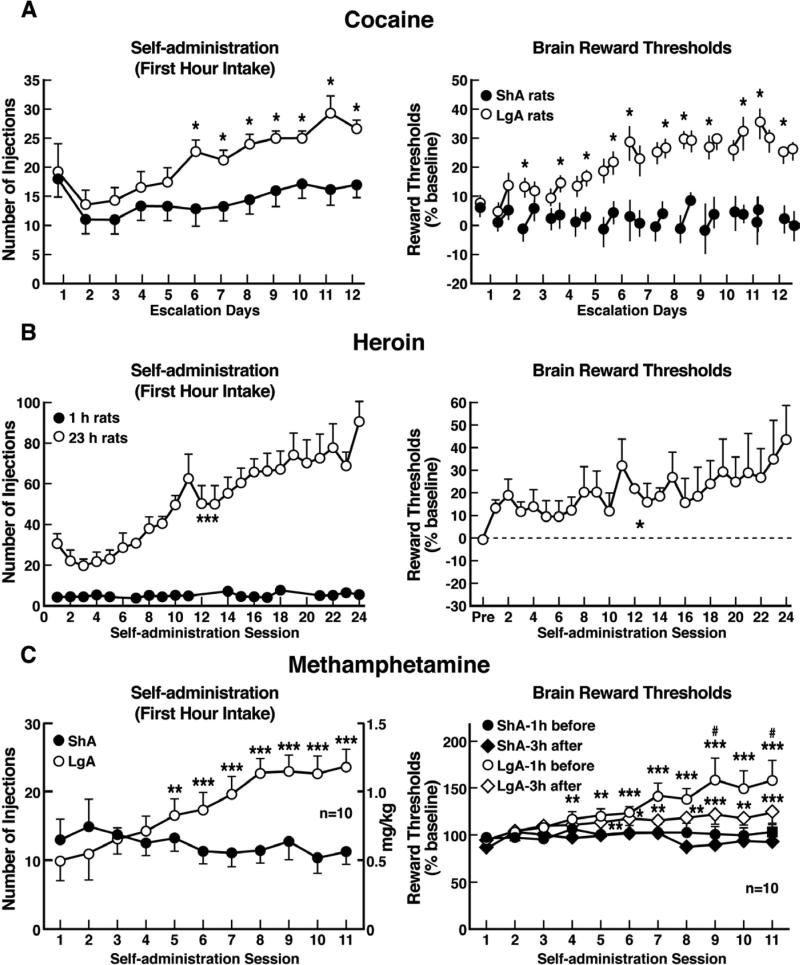Figure 3.
(A) Relationship between elevation in ICSS reward thresholds and cocaine intake escalation. (Left) Percent change from baseline response latencies (3 h and 17-22 h after each self-administration session; first data point indicates 1 h before the first session). (Right) Percent change from baseline ICSS thresholds. *p < 0.05, compared with drug-naive and/or ShA rats (tests for simple main effects). [Taken with permission from Ahmed et al., 2002.]. (B) Unlimited daily access to heroin escalated heroin intake and decreased the excitability of brain reward systems. (Left) Heroin intake (± SEM; 20 μg per infusion) in rats during limited (1 h) or unlimited (23 h) self-administration sessions. ***p < 0.001, main effect of access (1 or 23 h). (Right) Percent change from baseline ICSS thresholds (± SEM) in 23 h rats. Reward thresholds, assessed immediately after each daily 23 h self-administration session, became progressively more elevated as exposure to self-administered heroin increased across sessions. *p < 0.05, main effect of heroin on reward thresholds. [Taken with permission from Kenny et al., 2006.]. (C) Escalation in methamphetamine self-administration and ICSS in rats. Rats were daily allowed to receive ICSS in the lateral hypothalamus 1 h before and 3 h after intravenous methamphetamine self-administration with either 1- or 6-h access. (Left) Methamphetamine self-administration during the first hour of each session. (Right) ICSS measured 1 h before and 3 h after methamphetamine self-administration. *p < 0.05, **p < 0.01, ***p < 0.001, compared with session 1. #p < 0.05, compared with LgA 3 h after. [Taken with permission from Jang et al., 2013.]

